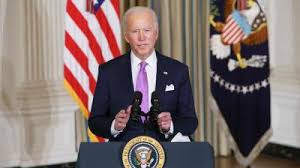Today Current Affairs: 28th January 2021 for UPSC IAS exams, State PSC exams, SSC CGL, State SSC, RRB, Railways, Banking Exam & IBPS, etc
Table of Contents
U.S.- Taliban peace deal:
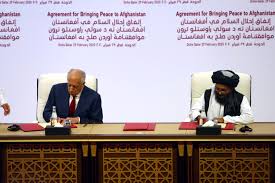
The Biden administration has said that it will review the US-Taliban deal to see if the Taliban are able to keep their end of the bargain.
U.S.- Taliban peace deal:
- A peace deal between the U.S. Government and the Taliban was signed on 29 February, 2020.
- The deal calls for U.S. and North Atlantic Treaty Organization (NATO) troops to leave Afghanistan.
Significance of Peace in Afghanistan for India:
- India has called for renewed efforts for establishing enduring peace and stability, and putting an end to externally-sponsored terrorism and violence in Afghanistan.
- Economically, it is a gateway to the oil and mineral-rich Central Asian republics.
- Afghanistan has also become the second-largest recipient of Indian foreign aid over the last five years.
Some of the important elements of the deal include:
- The withdrawal of US troops along with bringing down NATO or coalition troop numbers within 14 months from when the deal was signed.
The main counter-terrorism commitment by the Taliban is that:- Taliban will not allow any of its members, other individuals or groups, including al-Qaeda, to use the soil of Afghanistan to threaten the security of the United States and its allies.
DNA Technology (Use and Application) Regulation Bill, 2019:

Asaddudin Owaisi, president of the All India Majlis-e-Ittehad-ul-Muslimeen (AIMIM), and CPI leader Binoy Viswam have filed dissent notes to the parliamentary standing committee’s report on the DNA Technology (Use and Application) Regulation Bill, 2019 on the grounds that it does not take into account their concerns over privacy violations.
- The Bill proposes DNA sampling and profiling of citizens accused of a crime or reported missing, and storing their unique genetic information for administrative purposes.
- The objective of the Bill is limited to the establishment of a regulatory board to regulate the use of DNA technology in consonance with international standards.
- They say if enacted, the Bill will target Dalits, Muslims and Adivasis by way of DNA sample collection and indefinite storage.
- The fear is that the law could be used for caste or community-based profiling.
- The Bill ran afoul with the standards set in the Puttaswamy and Subramanian Swamy judgments of the Supreme Court.
- In the absence of a statutory framework protecting the right to privacy, this Bill will cause irreversible damage to individuals’ right to privacy as well as the criminal justice system.
Collegium Recommendations For Judicial Appointments:
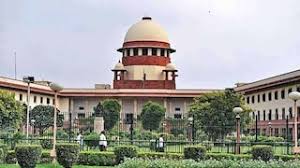
The Supreme Court (SC) questioned the government about the delay in clearing Collegium recommendations for judicial appointments to various High Courts (HC).
Collegium System:
- It is the system of appointment and transfer of judges that has evolved through judgments of the SC, and not by an Act of Parliament or by a provision of the Constitution.
Evolution of the System:
First Judges Case (1981):
- It declared that the “primacy” of the Chief Justice of India (CJI)s recommendation on judicial appointments and transfers can be refused for “cogent reasons.”
- The ruling gave the Executive primacy over the Judiciary in judicial appointments for the next 12 years.
Second Judges Case (1993):
- SC introduced the Collegium system, holding that “consultation” really meant “concurrence”.
- It added that it was not the CJI’s individual opinion, but an institutional opinion formed in consultation with the two senior-most judges in the SC.
Third Judges Case (1998):
- SC on President’s reference expanded the Collegium to a five-member body, comprising the CJI and four of his senior-most colleagues.
The SC collegium is headed by the CJI and comprises four other senior most judges of the court.
- An HC collegium is led by its Chief Justice and four other senior-most judges of that court.
- Names recommended for appointment by an HC collegium reaches the government only after approval by the CJI and the SC collegium.
- Judges of the higher judiciary are appointed only through the collegium system and the government has a role only after names have been decided by the collegium.
- The government’s role is limited to getting an inquiry conducted by the Intelligence Bureau (IB) if a lawyer is to be elevated as a judge in a High Court or the Supreme Court.
- Intelligence Bureau (IB): It is a reputed and established intelligence agency. It is authoritatively controlled by the Ministry of Home Affairs.
- It can also raise objections and seek clarifications regarding the collegium’s choices, but if the collegium reiterates the same names, the government is bound, under Constitution Bench judgments, to appoint them as judges.
Manufactured sand (M-sand):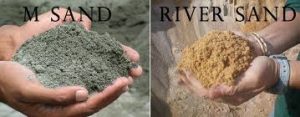
The Rajasthan government has brought a policy on manufactured sand (M-sand), giving industry status to the units producing it for construction work and reducing the dependence on bajri (riverbed sand).
Highlights of the new Policy:
- The policy will enable the investors to set up M-sand units by utilising the incentives offered by the State government.
- It will also help in environmental protection and generate faith among the public in the efficacy of M-sand for construction works.
- The policy would help create employment opportunities through new units and resolve the issue of huge quantities of waste generated in the mining areas.
- The Supreme Court had banned illegal mining on riverbeds in 2017.
What is M-Sand?
- M-sand is a substitute of river sand for concrete construction.
- Manufactured sand is produced from hard granite stone by crushing.
- The crushed sand is of cubical shape with grounded edges, washed and graded to as a construction material.
- The size of manufactured sand (M-Sand) is less than 4.75mm.
Its significance:
- It can be dust free, the sizes of m-sand can be controlled easily so that it meets the required grading for the given construction.
- It is well graded in the required proportion.
- It does not contain organic and soluble compounds that affect the setting time and properties of cement, thus the required strength of concrete can be maintained.
- It does not have the presence of impurities such as clay, dust and silt coatings.
Belagavi: Disputed Border Area Between Maharashtra And Karnataka:

Maharashtra Chief Minister said the disputed border area between Maharashtra and Karnataka should be made an Union Territory until the matter is heard by the Supreme Court. This sparked off a strong reaction in Karnataka.
- Maharashtra has been claiming that Belagavi, Karwar, and Nipani should be the part of that State as they are Marathi-speaking areas.
- The erstwhile Bombay Presidency, a multilingual province, included the present-day Karnataka districts of Bijapur, Belgaum, Dharwar, and Uttara-Kannada (previously North Kanara).
- The Belagavi/Belgaum region at the border of Maharashtra and Karnataka comprises both Kannada and Marathi speakers.
- In 1948, the Belgaum municipality requested that the district, having a predominantly Marathi-speaking population, be incorporated into the proposed Maharashtra state.
- However, the States Reorganisation Act of 1956, which divided states into linguistic and administrative lines, made Belgaum a part of the then Mysore State (which was renamed Karnataka in 1973).
- The area has been under dispute since then. The Maharashtra Ekikaran Samiti, formed in 1948, has been fighting for a merger of 800-odd villages in Karnataka with Maharashtra.
- In 2014, the Karnataka government renamed Belgaum as Belagavi.
Bharat Biotech’s BBV154: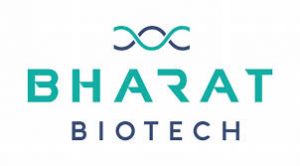
Bharat Biotech’s BBV154 is the first publicized attempt at getting an intranasal Covid-19 vaccine.
- Intranasal vaccines are most commonly administered as injectable shots into the muscles (intramuscular) or the tissue just between the skin and the muscles (subcutaneous).
- However, with intranasal vaccines, the solution is squirted or sprayed into the nostrils and inhaled instead of injecting it.
- Such vaccines not only aim to overcome barriers to delivery and administration that come with producing and distributing injectable vaccines, they also may be able to tap an additional set of immune cells found in the tissues lining the nose, mouth and lungs.
- Intranasal vaccines cut down on the need for syringes, needles and other components like alcohol swabs, as they are not injected.
- Eliminates needle-associated injuries and infections and is easy to administer, as it also does not require trained healthcare workers.
- It is also a single-dose, making it easier for those receiving the vaccine as well–they would not have to schedule revisits for booster shots the way they would have to with existing, injectable Covid-19 vaccines.
Past attempts to develop intranasal vaccines, including for measles flu, have not been very successful.
- These vaccines have mostly been made using live, weakened viruses, but have never cleared clinical trials.
- Only a live attenuated influenza flu vaccine has been licensed through this route of delivery.
Indian Telegraph Act, 1885
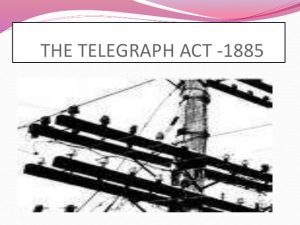 Following violent protests, the Union Home Ministry has issued orders to suspend Internet in some areas in Delhi under the Temporary Suspension of Telecom Services (Public Emergency or Public Safety Rules 2017) of the Indian Telegraph Act, 1885.
Following violent protests, the Union Home Ministry has issued orders to suspend Internet in some areas in Delhi under the Temporary Suspension of Telecom Services (Public Emergency or Public Safety Rules 2017) of the Indian Telegraph Act, 1885.
- The order under this act had been issued only twice before — in Delhi on December 19 and 20, 2019, at the height of the protests against the Citizenship (Amendment) Act.
- The rules framed in 2017 empower the Union Home Secretary and a State’s Home Secretary to pass directions to suspend the telecom services, including the Internet, “due to public emergency or public safety.”
About the Indian Telegraph Act, 1885
- It governs the use of wired and wireless telegraphy, telephones, teletype, radio communications, and digital data communications.
- It gives the Government of India exclusive jurisdiction and privileges for establishing, maintaining, operating, licensing, and oversight all forms of wired and wireless communications within Indian territory.
- It also authorizes government law enforcement agencies to monitor/intercept communications and tap phone lines under conditions defined within the Indian Constitution.
- Section 5(2) of the act allows central and state governments to prevent the transmission of messaging during a “public emergency or in the interest of public safety”, or “in the interests of the sovereignty and integrity of India, the security of the state”.
International Energy Agency (IEA):

The Framework for Strategic Partnership between the International Energy Agency (IEA) members and the Government of India was signed.
- It aims to strengthen mutual trust and cooperation & enhance global energy security, stability, and sustainability.
- This partnership will lead to an extensive exchange of knowledge and would be a stepping stone towards India becoming a full member of the IEA.
- The International Energy Agency (IEA) is a Paris-based autonomous intergovernmental organization.
- It was established in the framework of the Organisation for Economic Co-operation and Development (OECD) in 1974 in the wake of the 1973 oil crisis.
- The IEA is made up of 30 member countries.
- In addition, the IEA family also includes eight association countries which include Brazil, China, and India.
- Three countries are seeking accession to full membership, Chile, Israel, and Lithuania.
Non-Price Competition: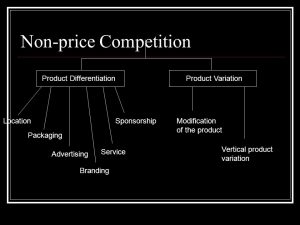
Non-price competition refers to competition between companies that focuses on benefits, extra services, good workmanship, product quality – plus all other features and measures that do not involve altering prices.
- It contrasts with price competition, in which rivals try to gain market share by reducing their prices.
- Non-price competition is often adopted by the competing players in a sector in order to prevent a price war, which can lead to a damaging spiral of price cuts.
- Data privacy can take the form of non-price competition and abuse of dominance can lower privacy protection, a study by the Competition Commission of India (CCI) has said.
Kanha Tiger Reserve:
A tigress was found dead in the buffer zone of Kanha tiger reserve in Madhya Pradesh.
- It stretches over an area of 940 square km in the two districts – Mandla and Balaghat – of Madhya Pradesh.
- The present-day Kanha area was divided into two sanctuaries, Hallon and Banjar. Kanha National Park was created in 1955 and in 1973 was made the Kanha Tiger Reserve.
- Kanha National Park is the largest National Park in Central India.
- The State animal of Madhya Pradesh – Hard Ground Barasingha (Swamp deer or Rucervus duvaucelii) is found exclusively in Kanha Tiger Reserve.
- Other Species found include Tiger, Leopard, Dhole, Bear, Gaur and Indian Python etc.
- It is best known for its evergreen Sal forests (Shorea Robusta).
- It is the first tiger reserve in India to officially introduce a mascot, “Bhoorsingh the Barasingha”.
Core and Buffer Zone
- For the purpose of management, tiger reserves are constituted on a ‘core – buffer’ strategy.
- In core areas, forestry operations, collection of minor forest produce, grazing, human settlement, and other biotic disturbances are not allowed and are singularly oriented towards conservation.
- The buffer zone is managed as a ‘multiple use area’ with conservation-oriented land use, having the twin objectives of providing habitat supplement to the spillover population of wild animals from the core, apart from facilitating site-specific eco developmental inputs to stakeholder communities.
COPRA:
The Cabinet Committee on Economic Affairs has given its approval for the Minimum Support Price (MSP) of copra for the 2021 season.
- Copra is the dried meat or kernel of the coconut, which is the fruit of the coconut palm (Cocos nucifera). Coconut oil is extracted from copra, making it an important agricultural commodity for many coconut-producing countries.
- The MSP for Fair Average Quality (FAQ) of milling copra has been increased, by Rs.375/-, to Rs. 10335/- per quintal for the 2021 season from Rs. 9960/- per quintal in 2020.
- The approval is based on recommendations of the Commission for Agricultural Costs and Prices (CACP).
- The increase in MSP for copra for the 2021 season is in line with the principle of fixing the MSP at a level of at least 1.5 times the all India weighted average cost of production which was announced by the Government in the Budget 2018-19.
- The National Agricultural Cooperative Marketing Federation of India Limited (NAFED) and National Cooperative Consumer Federation of India Limited (NCCF) will continue to act as Central Nodal Agencies to undertake price support operations at the MSP in the coconut growing States.
New START Treaty:

Russia approved the extension of the New START treaty.
- It is the last remaining nuclear Russia-USA arms control treaty which is about to expire in February 2021.
About the Approval:
- Both houses of Russian Parliament (Kremlin) approved the extension of the New START treaty for five years. It was done after a recent telephonic conversation between the newly elected USA President and the Russian President.
- At the World Economic Forum’s virtual meeting, the President of Russia hailed the decision to extend the treaty as “a step in the right direction,” but also warned about the rising global rivalries and threats of new conflicts.
- The pact’s extension doesn’t require congressional approval in the USA, but Russian lawmakers must ratify the move and its President has to sign the relevant Bill into law.
The New START Treaty:
- Objective: It is a treaty between the United States of America and the Russian Federation on measures for the further reduction and limitation of strategic offensive arms.
- The term ‘strategic offensive arms’ applies to nuclear warheads deployed by Strategic Nuclear Delivery Vehicles (‘SNDVs’).
SNDVs are Inter-Continental Ballistic Missiles (‘ICBMs’) with a range exceeding 5,500 kilometres, strategic bombers, warships (including strategic submarines) and cruise missiles, including air and sea-launched cruise missiles. - Enforcement:
- It came into force on 5th February, 2011.
Replaced START I Treaty (1991):
- New START has replaced the 1991 START I treaty, which expired in December 2009, and superseded the 2002 Strategic Offensive Reductions Treaty (SORT), which terminated when New START entered into force.
- The START Framework of 1991 (at the end of the Cold War) limited both sides to 1,600 strategic delivery vehicles and 6,000 warheads.
- The May 2002 Strategic Offensive Reductions Treaty (SORT), also known as the Moscow Treaty, committed the United States and Russia to reduce their deployed strategic nuclear forces to 1,700-2,200 warheads apiece.
- Limiting Strategic Nuclear Arsenals: It continues the bipartisan process of verifiably reducing the USA and Russian strategic nuclear arsenals by limiting both sides to 700 strategic launchers and 1,550 operational warheads.
- Renewal: It was to lapse in February 2021, but after receiving renewal approval from the USA and Russia, will be extended for a five-year period.
U.S. President Joe Biden’s administration has announced that it is restoring relations with the Palestinians:
U.S. President Joe Biden’s administration has announced that it is restoring relations with the Palestinians:and renewing aid to Palestinian refugees.
- This is a reversal of the Donald Trump administration’s cutoff and a key element of its new support for a two-state solution to the decades-old conflict agreed to by Israelis and Palestinians.
Israel-Palestine Conflict:
- The Israeli-Palestinian conflict dates back to the end of the nineteenth century, primarily as a conflict over territory.
- After the 1948 Arab-Israeli war, the Holy Land was divided into three parts: The State of Israel, the West Bank (of the Jordan River), and the Gaza Strip.
- The 1993 Oslo Accords mediated the conflict, to set up a framework for the two-state solution.
- It recognized the Palestinian Authority tasked with limited self-governance of parts of the West Bank and Gaza Strip.
Off-Budget Borrowing:
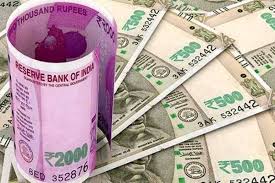
One of the most sought after details in any Union Budget is the level of fiscal deficit. As such, it is keenly watched by rating agencies — both inside and outside the country. That is why most governments want to restrict their fiscal deficit to a respectable number.
- One of the ways to do this is by resorting to “off-budget borrowings”.
- Such borrowings are a way for the Centre to finance its expenditures while keeping the debt off the books — so that it is not counted in the calculation of fiscal deficit.
- the fiscal deficit is essentially the gap between what the central government spends and what it earns. In other words, it is the level of borrowings by the Union government. This fiscal deficit is the most important metric to understand the financial health of any government’s finances.
Off-budget borrowings:
- Off-budget borrowings are loans that are taken not by the Centre directly, but by another public institution which borrows on the directions of the central government.
- Such borrowings are used to fulfil the government’s expenditure needs.
- But since the liability of the loan is not formally on the Centre, the loan is not included in the national fiscal deficit.
- This helps keep the country’s fiscal deficit within acceptable limits.
35th Pragati Meeting:

The Prime Minister of India recently chaired the 35th edition of Pro-Active Governance And Timely Implementation (PRAGATI) – the Information and Communication Technology (ICT) based multimodal platform, involving Central and State governments.
- Ten projects were taken for review involving a total investment of Rs. 54,675 crore. A review of Pradhan Mantri Bhartiya Jan Aushadhi Pariyojana was also taken.
- Launched in 2015, PRAGATI is the multimodal platform for Pro-Active Governance and Timely Implementation involving central and state governments.
- It has been designed by the Prime Minister’s Office (PMO) team with the help of the National Informatics Center (NIC).
- It enables the PM to discuss the issues with the concerned central and state officials with full information and latest visuals of the ground-level situation.
- The PRAGATI platform uniquely bundles three latest technologies: Digital data management, video-conferencing and geo-spatial technology.
- It is a three-tier system (PMO, Union Government Secretaries, and Chief Secretaries of the States).
Objective:
- Grievance Redressal.
- Program Implementation.
- Project Monitoring.
Significance:
- It promotes cooperative federalism as it brings together the Secretaries of the Government of India and the Chief Secretaries of the States.
- It is a robust system for bringing e-transparency and e-accountability with real-time presence and exchange among the key stakeholders.
- It is an innovative project in e-governance and good governance.
Cyber Insurance Policy:

A committee set up by the Insurance Regulatory and Development Authority of India (IRDAI) has recommended the introduction of a cyber insurance policy.
- Cyber insurance policy is a risk transfer mechanism for cyber risk.
- Cyber risk is commonly defined as exposure to harm or loss resulting from breaches of or attacks on information systems.
- This policy will protect the policyholders from cybercrimes.
- In October 2020, the IRDAI had set up a committee for cyber liability insurance under P Umesh.
- Amid the Covid-19 pandemic, there has been rising incidences of cyberattacks and a growing number of high-profile data violations.
Data highlighted:
- According to the committee report, the number of internet users in India is currently estimated at 700 million.
- India was ranked as the second-largest online market worldwide in 2019, coming second only to China.
- The number of internet users is estimated to increase in both urban as well as rural regions. This number is increasing rapidly so also is the number of users of online banking.
Features of an Individual cyber insurance policy:
- Theft of Funds, Identity Theft Cover, Social Media cover, Cyber Stalking, Malware Cover, Phishing cover, Data Breach and Privacy Breach Cover, etc
- Recommendations: Cyber insurance policies currently available address the requirements of individuals reasonably well.
- However, there are some areas in the product features and processes which need improvement.
- FIR on higher claims:
- Insurers should not insist on police FIR (First Information Report) for claims up to Rs. 5,000.
- FIR is a critical requirement to assess claims.
- Clarity in exclusion language relating to compliance with reasonable practices and precautions and the need for coverage for bricking costs.
- Bricking refers to a loss of use or functionality of hardware as a result of a cyber event.
On Standardisation of Cyber Insurance Policy:
-
- Cyber risks are dynamic and evolving. Standardization is a good idea but may not be able to address all the emerging risks and is likely to limit innovation.

